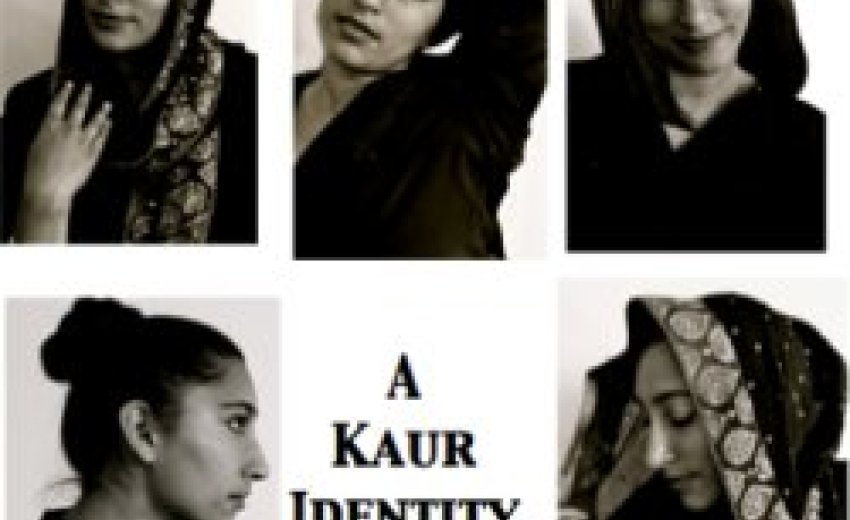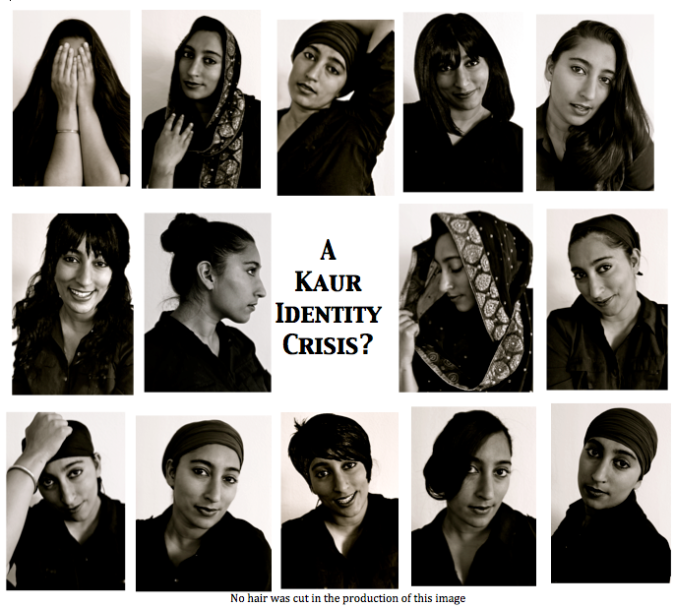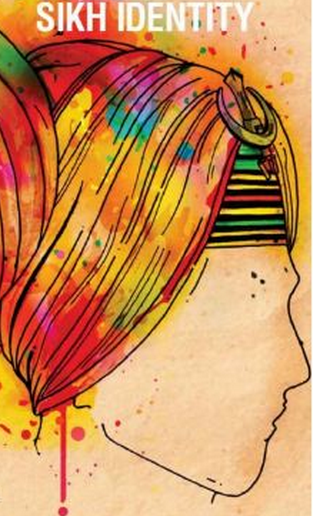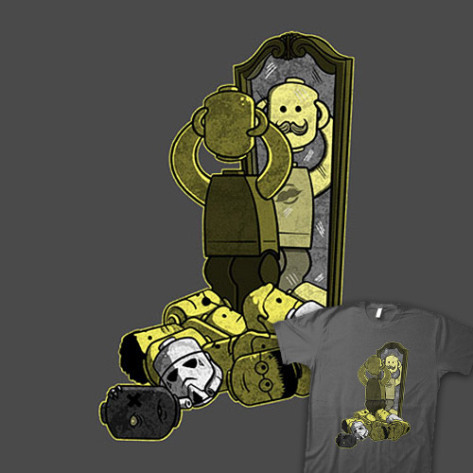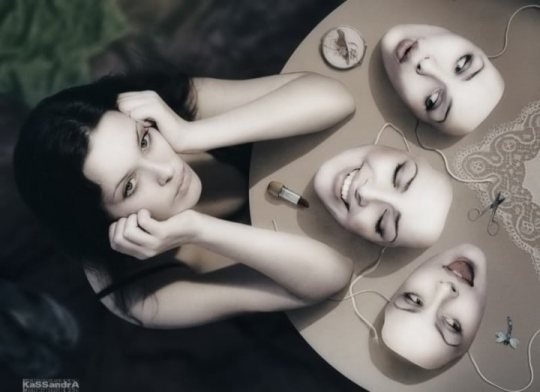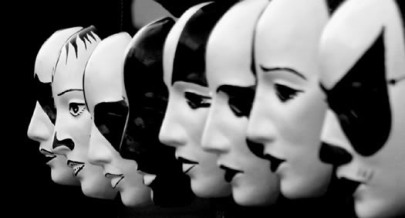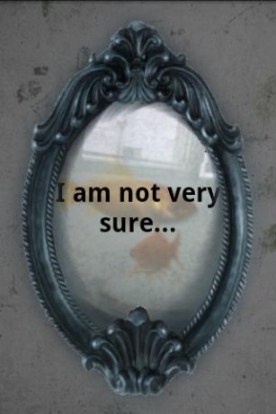| What does a Kaur look like?
Intro September 10, 2013: The physical identity of Singhs is quite simple. Either he keeps his dhari and wears a dastar, or he doesn’t. There are a few combinations of those options, such as wearing dastar but not having a dhari and vice versa, but in general, the visual portrayal of the Sikh male is standard and universal. The Kaur physical identity, however, is not so obvious or well defined. Some Kaurs keep kesh, others do not. Some cover their heads with dastars, patkas, or chunis, while others choose not to cover their heads. Some Kaurs believe it is okay to try different hairstyles, while others stick to one. At this point in time, Sikhi does not have a collective, communal idea of what a Kaur looks like or what her physical identity should portray. This begs the question: Are Kaurs, as a collective, suffering from a physical identity crisis?
What is a physical identity? What exactly is an identity or a physical identity? An identity refers to a social category (group of people) that has membership rules, unique attributes, or expected behaviors. A social category also has a sets of characteristics (beliefs, morals, or physical attributes). People who are part of a social category take pride in their group; it is a source of dignity, pride, or honor, (Source 1). Using the above definition, “Sikh” is a social category and a Sikh identity would be defined as:
In the Sikh case, the physical features of a person connect him/her to Sikh values and characteristics. “Sikhs wear an external uniform to unify and bind them to the beliefs of the religion and to remind them of their commitment to the Sikh Gurus at all times,” (Source 2). Identity Politics The argument or disagreement over who is part of a social category (group) or who is not, is called “identity politics,” (Source 1). It asks the question, “Does this person/behavior/characteristic fit into the social category?” It seems like the Singh physical identity is very obvious. “The dastar and dhari make this man a Sikh, visually.” Yet the Kaur identity, her characteristics and physical attributes, is still a matter of identity politics. “What makes this woman a Sikh, visually? Her long hair? Does she need it to be covered before we call her a Kaur? Does she need to wear a dastar?”
There is contestation over a Kaur’s “look.” The Kaur identity is not unified, “Sikh women, some with their turbans, some with their long hair in buns and braids, are perhaps less identifiable ….,” (Source 6). The Kaur’s physical identity, whether it be hidden in private minds or in openly discussed in public forums, is a matter of identity politics. “After the Oak Creek tragedy, I watched stranger after stranger come up to the males in my family and offer their support and condolences. No one said anything to me, and eventually I realized it’s because there’s nothing about my appearance that’s noticeably Sikh,” (Source 3). If all Sikh women wore dastars, would the Kaur physical identity be more recognizable? Or would chunis suffice? Maybe we should just let our hair down? Perhaps, it is not the vehicle or mode of expression, but rather, that we all look the same and have a unified front? “She is a Kaur because all Kaurs wear/have xyz.” What does a Kaur look like? When it comes to personal physical identity, a person has physical characteristics that she is aware of, and which distinguishes her from other people. A social category, like “Sikh” or “Singhs,” is in part defined by what a it is not. How is a Singh visually different from non-Singhs? His beard + turban + 5Ks But, since the Kaur’s physical identity is in constant flux and not universally consistent, it is difficult to say Kaurs are visually different from non-Kaurs. The social category of “Kaur,” is not as solidified as “Singh,” because it is impossible to define what Kaur physically looks like. What is she not? How is a Kaur visually different from non-Kaurs? Her 5Ks? But those are very subtle and not as visually impactful as her male counterparts. Her 5Ks and her long hair? Her chuni? Her dastar? Her braid? A group identity cannot be constructed with varying uniforms. A social category does not exist with multiple definitions of a single identity. Thus, it is difficult to say that Kaurs, as a group, have a cohesive physical identity.
To illustrate this dilemma consider visual media. Sikh organizations struggle to represent the Kaur in their print media. They quickly slap an image of a sardar on their brochures, “But what about the female?” the marketing director asks. “Does a Kaur in a dastar suffice?” asks the designer. “But what about those with chunis? Or jooras?” This question of Kaur representation goes beyond the marketing department. Kaurs struggle with understanding their place in the larger world, non-Sikh groups, and the Sikh panth. Without a cohesive identity, some feel suspended between worlds, not completely part of any single community. In this struggle, may Kaurs “try on” different physical identities and journey through different identity statues.
Identity Statuses According to developmental psychologist E.H. Erikson, there are several identity statuses that individuals may go through. I have tried to apply them to the physical identity of Kaurs, (Source 4). 1. Identity achievement occurs when an individual has gone through an exploration of different identities and made a commitment to one, (Source 4).
2. Moratorium is the status of a person who is actively involved in exploring different identities, but has not made a commitment, (Source 4).
3. Foreclosure status is when a person has made a commitment without attempting identity investigation, (Source 4).
4. Identity diffusion occurs when there is neither an identity crisis nor a commitment, (Source 4).
Most Singhs are handed one identity status, the foreclosure status, and commit to it for their entire lives. The second he is born, his parents expect him to wear a dastar (in general). In essence, the Singh is born into foreclosure status, “Because I am a Singh, I wear a dastar. I have never and will never explore other options.” Kaurs however, are more likely to struggle between the four statuses.
Identity and Fitting into Community: When a Kaur “finds herself,” or “creates herself,” she finds community and fits into it. Through this process, she emerges as a unique person with a specific physical identity, temperament, personality, and ideals, which mold (and in turn are molded by) her roles, occupations, relationships, and values, (Source 5). She becomes unique, but she also becomes part of a larger community (in the Sikh context, this would be the panth) that has created a collective consciousness (Sikh theology and practice); a consciousness that is perpetuated by physical identity (bana). But if Sikh women go through the identity formation process, jumping from one identity status to the other, and emerge as Kaurs with “different faces,” as a vast range of different physical identities, without any cohesiveness or uniformity, does she truly become a part of a community? Does this lack of Kaur unity mean the panth has botched the construction of a gender-neutral collective consciousness? Has the panth failed in giving the Kaur a role in representing Sikhi to the world through her physical image? Has the panth been unsuccessful in creating belonging and community for the Kaur? Is she unable to bond with fellow Sikhs because she doesn’t look like a “Sikh”? Ultimately, I think the lack of a cohesive understanding of the Kaur’s physical identity results in ambiguity, apathy, and confusion.
Why does it matter? The struggle for people to visual portray the female Sikh, begs the question, why do Kaurs need to be recognized as Kaurs? Does she need to feel like she is a part of the panth through her bana, or can she live life happily and be fulfilled without physical sameness? I personally feel that, yes, Kaurs should have a visually distinct identity, and a consistent physical uniform because a uniform:
However, the opposing view point is interesting and has merit too. Here are some reasons some may feel a consistent uniform is unnecessary. “No, Kaurs can look whichever way they wish, they do not need a visually distinct identity, and consistent physical uniform because….”
Or…Are we putting the cart before the horse? “Infuse the Kaur with gurbani and Guru will show her the way,”…and ultimately, this conversation is meaningless…? Conclusion: Why is it important to have an identity? Physical identity impacts how other perceive and treat you, molds how you feel about yourself, and communicates your values to the world. Furthermore, physical identity has a role in developing personal psyche. “Researchers have found that those who have made a strong commitment to an identity tend to be happier and healthier than those who have not. Those with a status of identity diffusion tend to feel out of place in the world and don’t pursue a sense of identity,” (Source 4). I guess this means, choose an identity, commit to it and become happier and more connected with the panth. But what is that physical identity for Kaurs and should it be universal for all Kaurs, as it is for Singhs?
Sources: (1) http://www.stanford.edu/~jfearon/papers/iden1v2.pdf |

